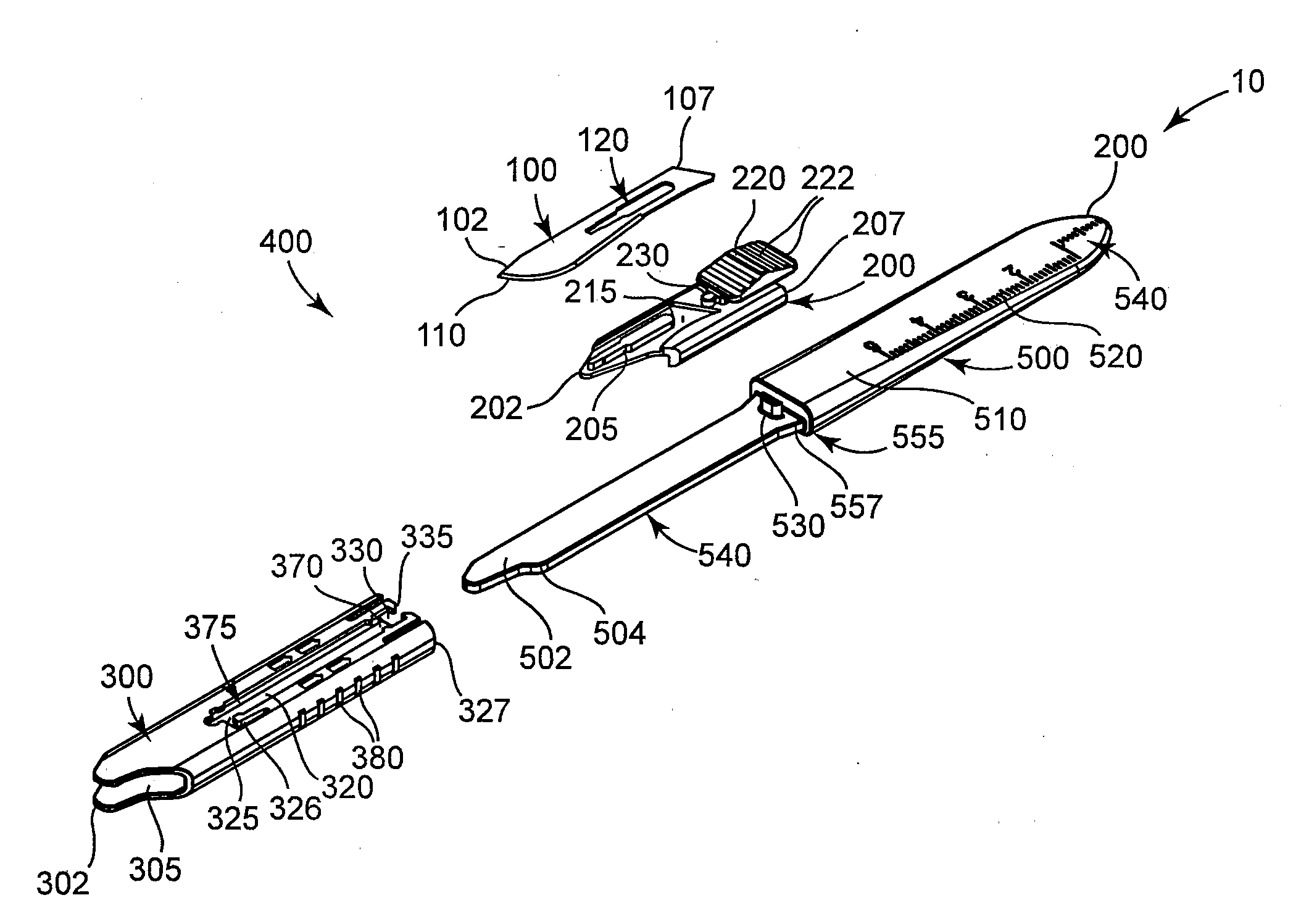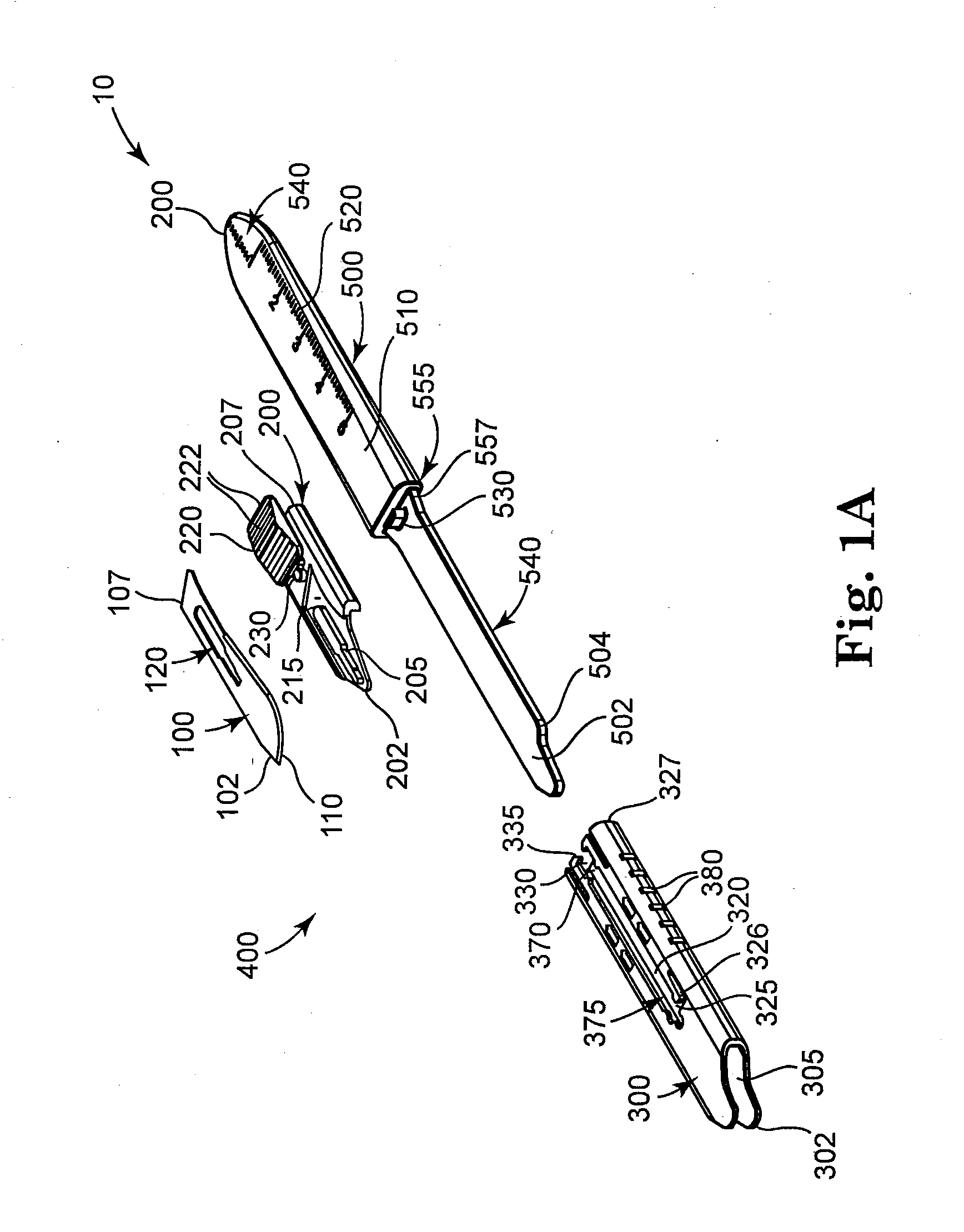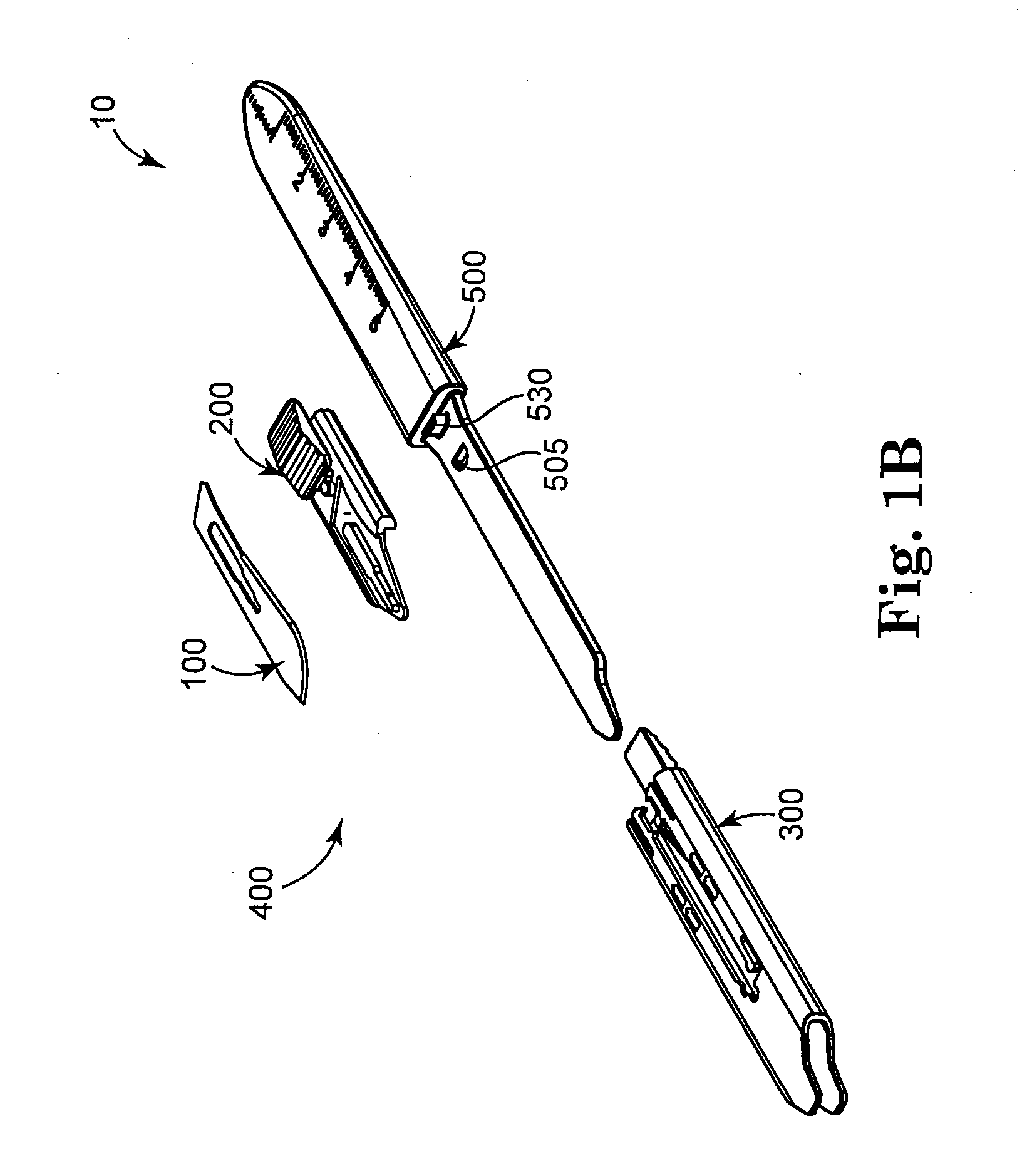Safety scalpel
a scalpel and safety technology, applied in the field of scalpels, can solve the problems of potentially life-threatening infections of each of these pathogens, health care workers are actually experiencing increasing numbers of occupational injuries and illnesses, and laboratory staff, physicians, housekeepers, etc., and achieve the effect of convenient mounting
- Summary
- Abstract
- Description
- Claims
- Application Information
AI Technical Summary
Benefits of technology
Problems solved by technology
Method used
Image
Examples
first embodiment
[0082] In a first embodiment, the blade guard 300 of FIGS. 3A and 3B is secured to the scalpel handle 500 of FIG. 1A. That is, there is no aperture 505 (see FIG. 1B).
[0083] The blade guard 300 in this first embodiment is removed by having the holder knob 220 placed in the rear retaining slot 370, such that the blade 100 is in the closed position and does not extend from the blade guard 300. The holder knob 220 can be slid slightly further towards the proximal end 307 of the blade cartridge 400 (e.g., proximal end 307 of the blade guard 300), or towards the approximate midpoint 555. When the holder knob 220 slides in this direction, the catch 335 moves away from the extending member 530 of the scalpel handle 500. This can release the blade cartridge 400 from the scalpel handle 500. Then, the user need only slide the entire blade cartridge 400 towards the distal end 502 of the scalpel handle 500, or off the scalpel handle 500.
second embodiment
[0084] In a second embodiment, the scalpel handle 500 includes an aperture 505 in proximity to the extending member 530, preferably slightly offset towards the distal end 502. In this embodiment, the blade cartridge 400 (e.g., the blade guard 300) further includes the locking mechanism 355 about its rear face 315.
[0085] Once the locking mechanism 355 is removed from the aperture 505, the catch 335 can be released from the extending member 530, as described above. Then, the blade cartridge 400 is loose enough to be released from the scalpel handle 500. In essence, the latching assembly 345 is an additional safety feature to help ensure the blade cartridge 400 does not mistakenly release from the scalpel handle.
[0086] The rear face 315 of the blade cartridge 400 (e.g., the rear face 315 of the blade guard 300) matches up with the rear face 515 of the scalpel handle 500. When the blade cartridge 400 is secured to the scalpel handle 500, the latching assembly 345 is adapted to engage t...
PUM
| Property | Measurement | Unit |
|---|---|---|
| stress | aaaaa | aaaaa |
| weight | aaaaa | aaaaa |
| flexibility | aaaaa | aaaaa |
Abstract
Description
Claims
Application Information
 Login to View More
Login to View More - R&D
- Intellectual Property
- Life Sciences
- Materials
- Tech Scout
- Unparalleled Data Quality
- Higher Quality Content
- 60% Fewer Hallucinations
Browse by: Latest US Patents, China's latest patents, Technical Efficacy Thesaurus, Application Domain, Technology Topic, Popular Technical Reports.
© 2025 PatSnap. All rights reserved.Legal|Privacy policy|Modern Slavery Act Transparency Statement|Sitemap|About US| Contact US: help@patsnap.com



